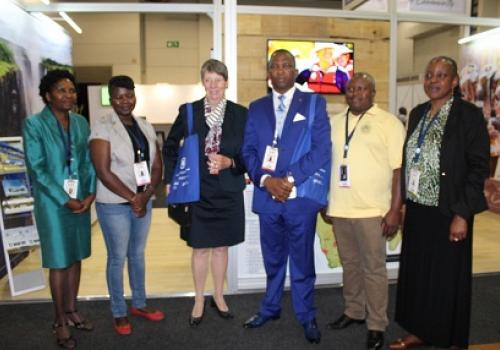Government leaders, conservation experts, members of the scientific community and a host of other people and interested parties have descended in Johannesburg, South Africa for the 17th Conference of Parties (COP17) to the United Nations Convention on International Trade in Endangered Species of Wild Fauna and Flora (CITES) #CITES COP17. CITES is an international agreement between 183 State Parties with Angola and The European Union now accepted as new members. Itspurpose is to ensure that international trade in specimens of wild animals and plants does not threaten their survival. The Conference which opened on 24 September 2016 at the Sandton Convention Centre, in Johannesburg and will run for two weeks. It was addressed by His Excellency Mr Jacob Zuma, President of the Republic of South Africa and current Vice-Chairperson of SADC. The last time the CITES COP was held on African soil was 16 years ago, making this year’s meeting especially important to the continent considering the current trends of illegal killing and trade in wildlife and wildlife products which include timber and fisheries products. It is also the largest in terms of attendance and most vigorously debated conference in the 43 years history of the Convention.
In his opening speech, President Zuma underscored the importance of sustainable use of indigenous biological resources which is fundamental to the development of South Africa and the Region’s economy and social transformation. The President indicated that it is critical for governments to ensure that international trade in specimens of wild animals and plants is regulated to ensure that it remains at sustainable levels and he reiterated on the importance ensuring that communities become custodians and beneficiaries of their natural resources.
Annually, international wildlife trade is estimated to be worth billions of dollars and to include hundreds of millions of plant and animal specimens. The trade is diverse, ranging from live animals and plants to a vast array of wildlife products derived from them. These products include exotic leather goods, wooden musical instruments, timber, tourist curios medicines and food products. Loss of habitat, high Levels of exploitation and trade of some animal and plant species are some of the factors which are capable of heavily depleting their populations and even bringing some species close to extinction. Many wildlife species in trade are not endangered, but the existence of an agreement to ensure the sustainability of the trade is important in order to safeguard these resources for the future.
At the conference, parties will evaluate the progress made since 2013, and take decisions on additional measures to end illicit wildlife trafficking. They will also consider a number of proposals to bring additional species under CITES trade controls, among other things. There are about 68 proposals to be tabled to either tighten or loosen restrictions on some 500 species or so at this Conference, but the following 5 animals are expected to draw much attention: The African Elephant, White Rhinoceros, Pangolin, Lion and Sharks.
SADC Secretariat and its development partners, specifically the German Development Agency (GIZ), has worked tirelessly to ensure that SADC Member States are well prepared for these negotiations. On the 22nd September 2016, the SADC Secretariat hosted an Extra-Ordinary Meeting of the SADC Ministers responsible for Environment and Natural Resources to adopt the SADC Common Position for CITES COP17. The common position is in line with the SADC regional common agenda as outlined in the revised Regional Indicative Strategic Development Plan (RISDP), the SADC Protocol on Wildlife and Law Enforcement and the SADC Law Enforcement and Anti-poaching (LEAP) Strategy, amongst others. The meeting was attended by 11 Member States and the Common Position was endorsed.

